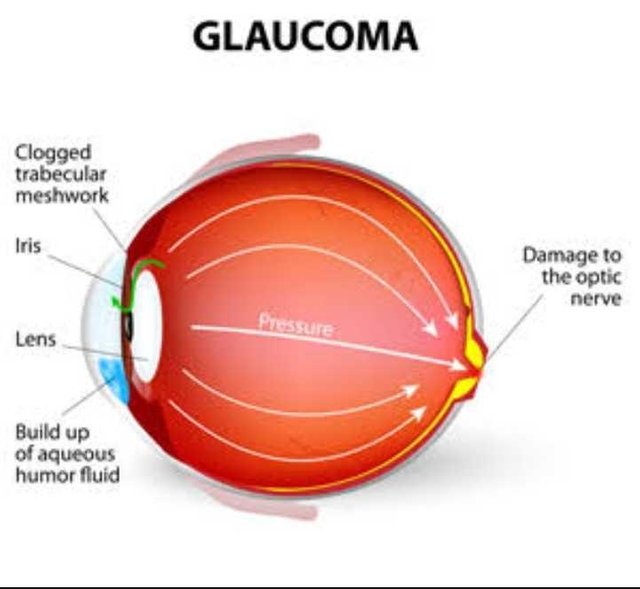Glaucoma
glaucoma
n.
a condition of the optic disc in which a loss of retinal nerve fibres leads to loss of vision

. The most significant and manageable risk factor is the pressure in the eye. There are two types of primary glaucoma (in which no other ocular disease is present): acute and chronic simple. In acute (or angle-closure) glaucoma, there is an abrupt rise in pressure due to sudden closure of the angle of the anterior chamber between the cornea and iris where aqueous humour usually drains from th  e eye. This is accompanied by sudden and severe pain with marked blurring of vision associated with inflammation of the anterior segment. In the more common chronic simple (or open-angle) glaucoma, the pressure increases gradually, usually without any symptoms, and the visual loss is insidious. The same type of visual loss may rarely occur in eyes with a normal pressure: this is called normal (or low-tension) glaucoma. Primary glaucoma occurs increasingly with age and is an important cause of blindness. Secondary glaucoma may occur when other ocular disease impairs the normal circulation of the aqueous humour and causes the intraocular pressure to rise.
e eye. This is accompanied by sudden and severe pain with marked blurring of vision associated with inflammation of the anterior segment. In the more common chronic simple (or open-angle) glaucoma, the pressure increases gradually, usually without any symptoms, and the visual loss is insidious. The same type of visual loss may rarely occur in eyes with a normal pressure: this is called normal (or low-tension) glaucoma. Primary glaucoma occurs increasingly with age and is an important cause of blindness. Secondary glaucoma may occur when other ocular disease impairs the normal circulation of the aqueous humour and causes the intraocular pressure to rise.
In all types of glaucoma the aim of the treatment is to reduce the intraocular pressure. Drugs used for this purpose include beta blockers (e.g. timolol, levobunolol, carteolol), carbonic anhydrase inhibitors (e.g. brinzolamide, dorzolamide), alpha-receptor stimulants (e.g. apraclonidine, brimonidine), and prostaglandin analogues (e.g. latanoprost). They can be used in the form of eye drops. If the medical treatment is ineffective, surgery may be performed to make a new channel through which the aqueous humour may drain from the eye in sufficient quantities to allow the pressure to return to normal. Such operations are known as drainage or filtering operations.
very informative post